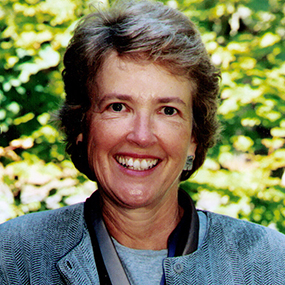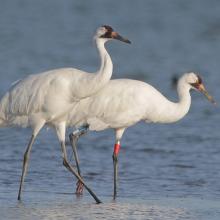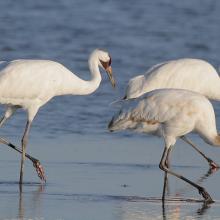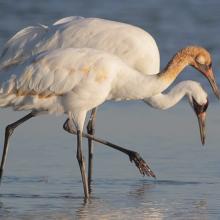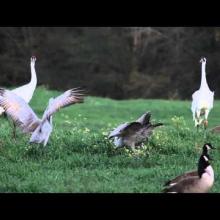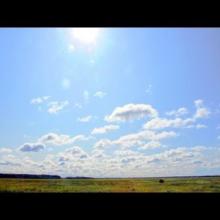

Join BirdNote tomorrow, November 30th!
Illustrator David Sibley and actor H. Jon Benjamin will face off in the bird illustration battle of the century during BirdNote's Year-end Celebration and Auction!
In Canada, where Alberta meets The Northwest Territories, lies Wood Buffalo National Park, where endangered Whooping Cranes dance, nest, and raise their young. It's a "place of superlatives,” says park superintendent Rob Kent. “Visitors can see pristine ecosystems, 5,000 bison, 150-pound wolves, and the largest freshwater delta in North America.” When summer ends and the juvenile cranes are able to fly, they migrate 2,700 miles to their wintering grounds on the Gulf Coast of Texas.
BirdNote®
Wood Buffalo National Park – Birthplace of Whooping Cranes
Written by Chris Peterson with special thanks to Rob Kent, WBNP Superintendent
This is BirdNote!
[Calls of Whooping Cranes]
In the Canadian north, where Alberta meets The Northwest Territories, lies the huge Wood Buffalo National Park. Here the Peace and Athabasca Rivers run through fescue grasslands, boreal forests, and wetlands of international significance. Here one of the world’s most endangered birds, the Whooping Crane, comes to dance, nest, and raise its young.
[Calls of Whooping Cranes]
“I like to describe Wood Buffalo National Park as a place of superlatives,” says park superintendent Rob Kent. “Visitors can see pristine ecosystems, 5,000 bison, 150-pound wolves, the largest freshwater delta in North America, and fire and ice that shape things on a grand scale. [Jump in a Cessna 210, and it’ll take you almost two hours to fly across.]”
[wolf howl followed by wetland]
The world’s last completely wild flock of Whooping Cranes – about 275 – returns in spring to a vast mosaic of marshes and shallow ponds. In summer, with 20 hours of daylight, you can almost hear the explosive growth of plants and insects. [Insects] The insects become food for the dragonfly larvae that become food for the birds. [With their necks outstretched, the birds can stand five feet tall.]
When summer ends and the juveniles are able to fly, the cranes fly 2,700 miles to winter on the Gulf Coast of Texas.
[Calls of Whooping Cranes]
[The immense dark skies of the park now dance with northern lights.]
See videos and learn more at birdnote.org.
###
Bird sounds provided by The Macaulay Library of Natural Sounds at the Cornell Lab of Ornithology, Ithaca, New York. Calls of Whooping Cranes [2748 and 2749] recorded by George Archibald; honey bee and other insects [60446] recorded by V.J. Ketner.
Nature SFX sounds recorded by Gordon Hempton of Quietplanet.com. #18 stream flowing, #63 coniferous forest with insects, ravens and other birds; wetland pond with morning birdsong #97
BirdNote’s theme music was composed and played by Nancy Rumbel and John Kessler.
Producer: John Kessler
Executive Producer: Chris Peterson
© 2014 Tune In to Nature.org April 2014/2018/2022 Narrator: Michael Stein
ID# WHCR-woodbuffalo-01-2014-04-17WHCR-woodbuffalo-01


